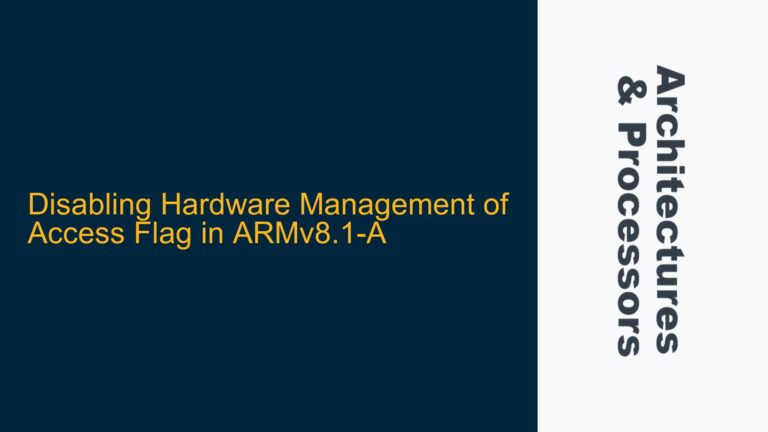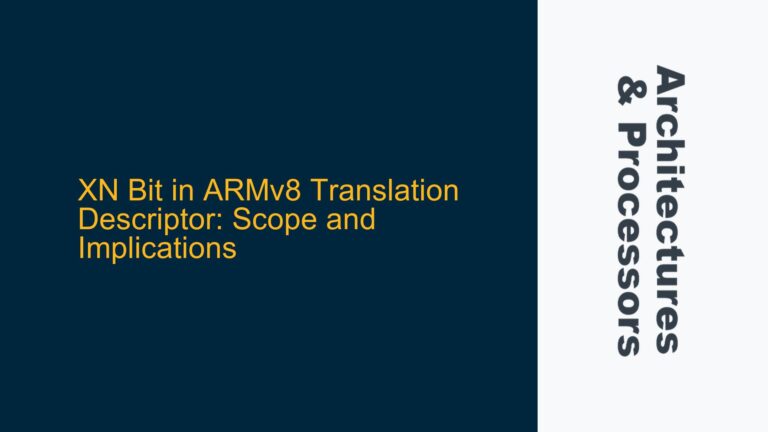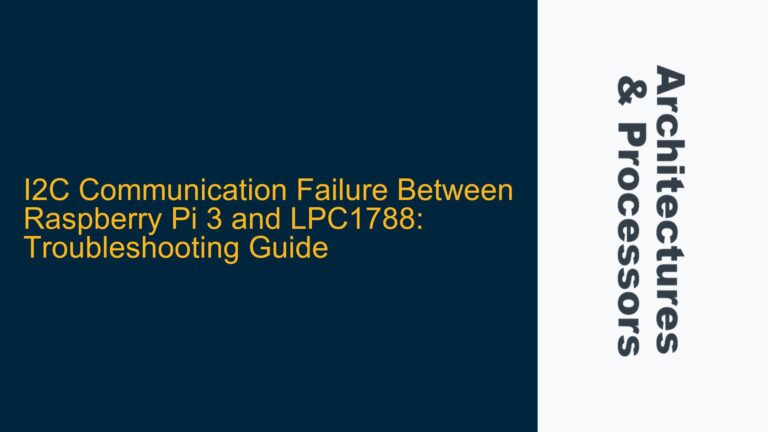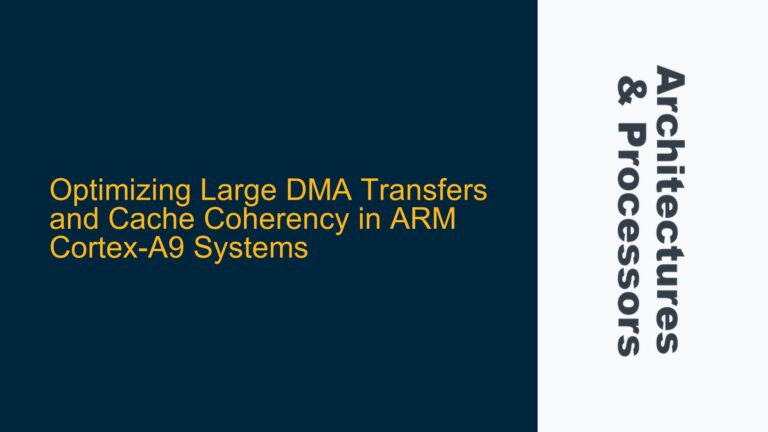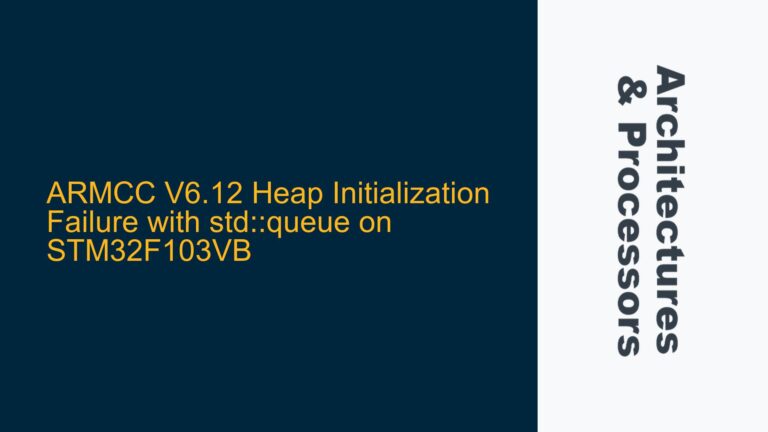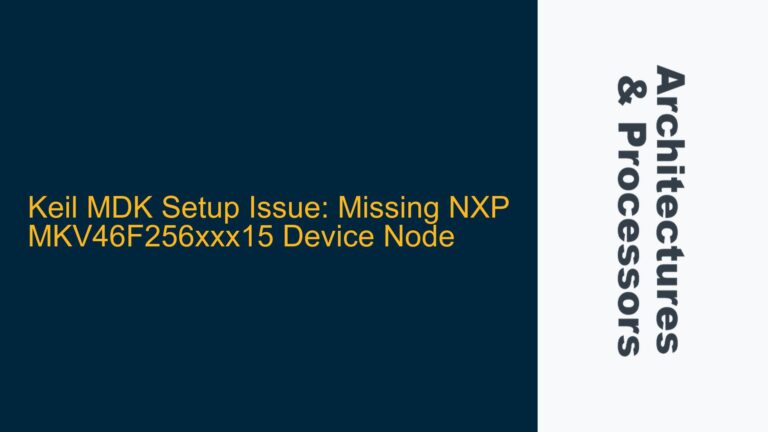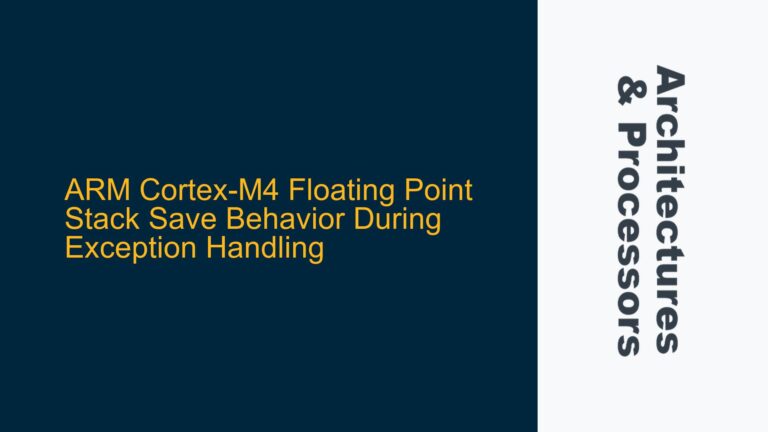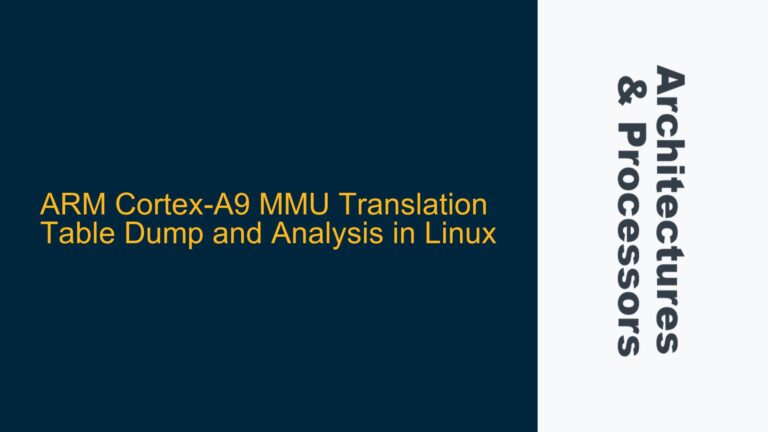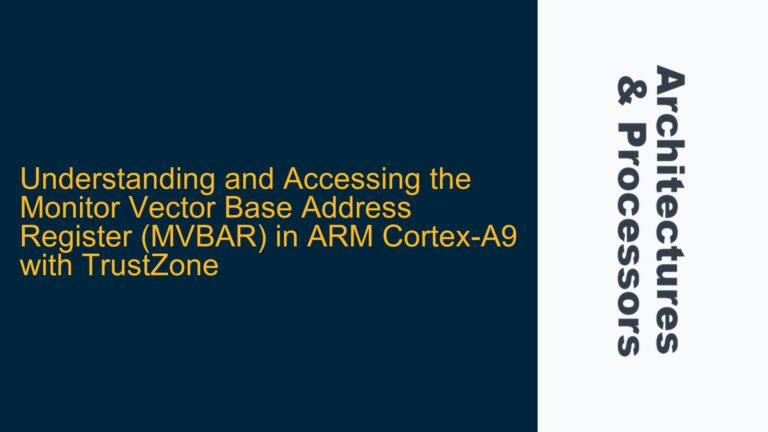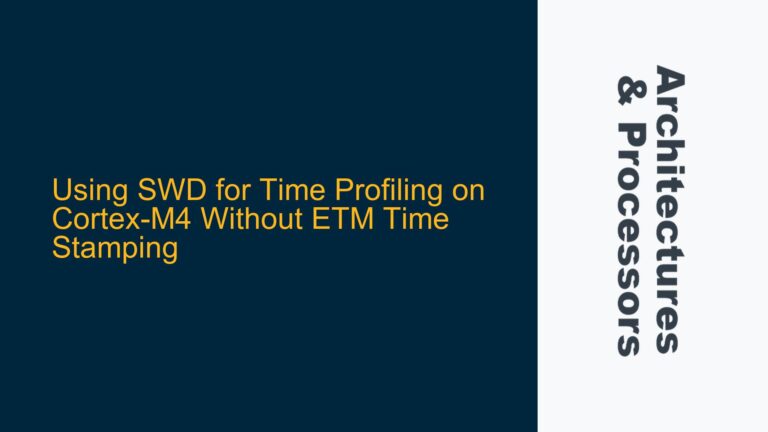Disabling Hardware Management of Access Flag in ARMv8.1-A
ARMv8.1-A Access Flag Hardware Management Overview The ARMv8.1-A architecture introduces a feature known as hardware management of the Access flag, which is part of the memory management unit (MMU) functionality. The Access flag is a bit in the page table entries that indicates whether a particular page has been accessed. This flag is crucial for…
